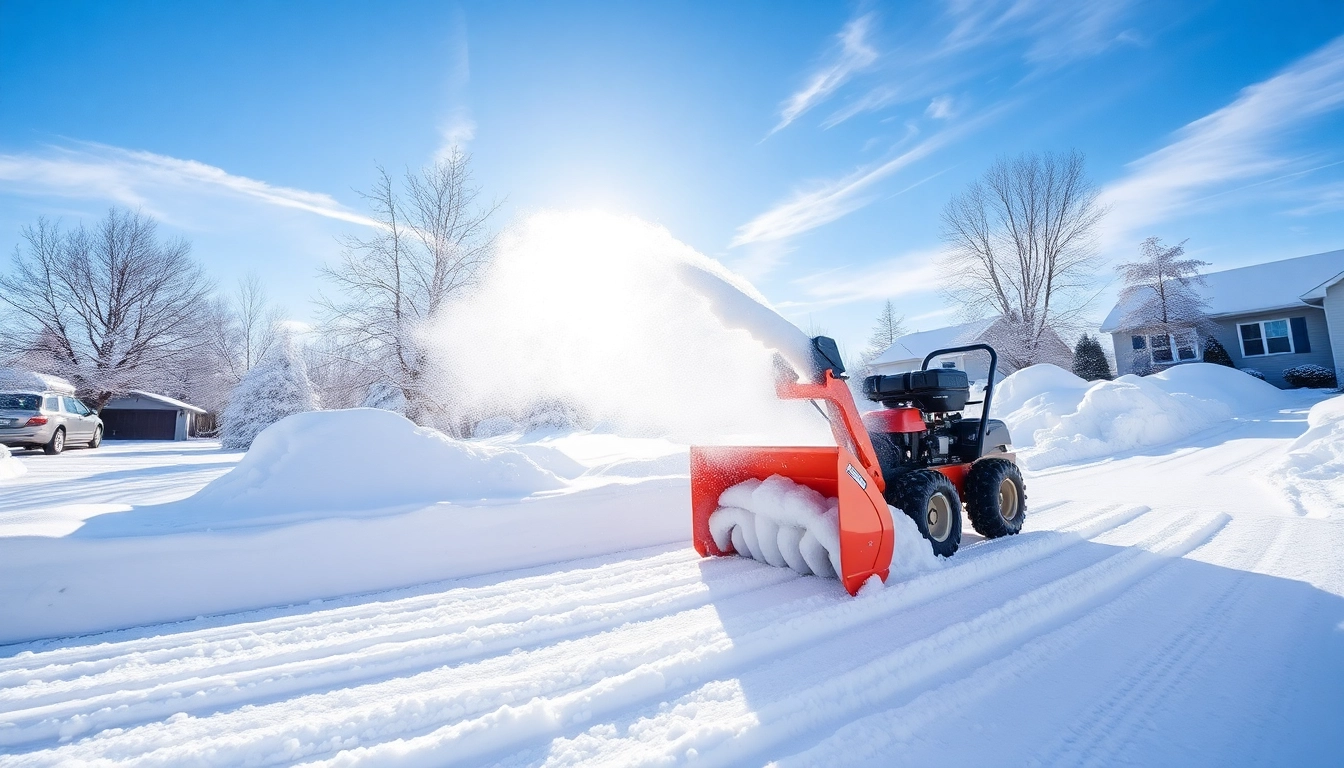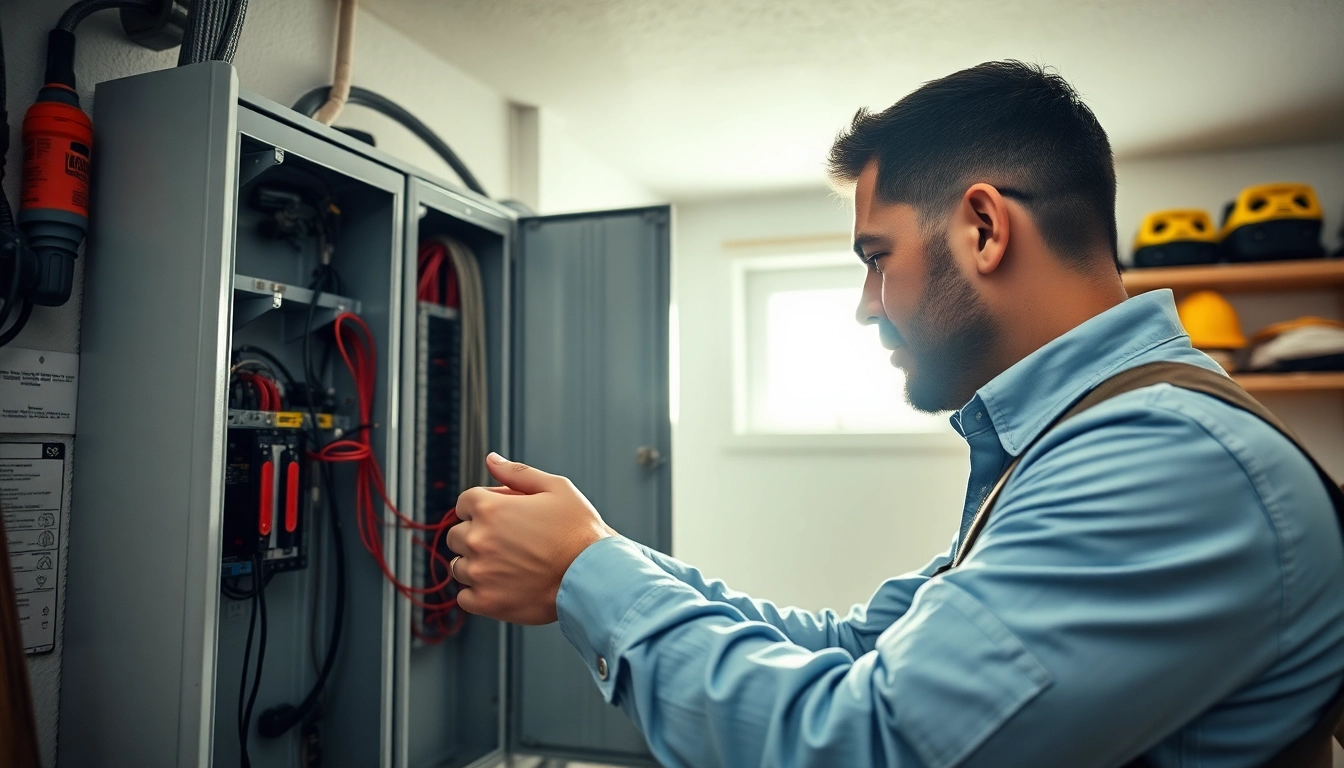Understanding the Importance of Snow Removal
Snow removal is not simply a chore for homeowners in winter; it is essential for safety, accessibility, and property preservation. Effective snow removal helps ensure that roads, driveways, and walkways are clear for pedestrian and vehicular movement, greatly reducing the risk of accidents. It also prevents the accumulation of snow, which can lead to damage to infrastructure, gardens, and landscaping. As such, understanding the importance of snow removal extends beyond mere aesthetics; it encompasses safety, community obligations, and property maintenance.
Why Timely Snow Removal is Crucial
The urgency of snow removal cannot be overstated. Firstly, timely clearing of snow minimizes the risk of slips and falls, which can lead to serious injuries. Statistics indicate that slip and fall accidents are among the leading causes of injuries during the winter months. Thus, homeowners and businesses alike bear the responsibility to act swiftly after a snowfall.
Moreover, snow removal helps maintain accessibility for emergency services. In the event of a snowstorm, police, fire, and medical responders need to navigate roads effectively to reach those in need. A quick response can make all the difference in emergencies such as medical crises or fires. Additionally, local regulations often require homeowners to clear their sidewalks within a specific timeframe post-snowfall, making prompt action not just courteous but legally necessary.
Snow Removal Regulations and Guidelines
Many municipalities have specific regulations governing snow removal to ensure public safety and convenience. Generally, these laws require property owners to clear sidewalks adjacent to their homes within a certain period after snowfalls—often within 24 hours. Non-compliance can lead to fines or penalties, and even liability in case of an accident due to unshoveled walkways.
It is essential for homeowners to be aware of their local snow removal policies. Some cities and towns even provide programs to assist the elderly or disabled in snow removal, reflecting a community-oriented approach to public safety during winter.
Impact of Snow Accumulation on Property
Over time, the accumulation of snow can significantly damage your property. Heavy snow on roofs can cause structural issues, leading to leaks or even roof collapse in extreme cases. Additionally, the weight of compacted snow can lead to damage on pavements and driveways. Moreover, stagnant pools of melting snow can lead to flooded areas around your home, resulting in further complications such as mold growth or pest infestations.
For landscaping, the impact is twofold: snow can insulate plants during the winter but excessive freezing and thawing cycles can harm perennials. Therefore, timely and efficient snow removal plays a critical role in the overall preservation of residential and commercial properties.
Types of Snow Removal Methods
Manual vs. Mechanical Snow Removal
When it comes to snow removal, homeowners typically have two primary options: manual and mechanical. Manual methods involve tools like shovels and snow scoops, which can be effective but labor-intensive. This traditional approach is best suited for lighter snowfalls and smaller areas.
On the other hand, mechanical options such as snow blowers, which range from single-stage to multi-stage models, offer efficient removal of heavier snowfalls and larger areas. For those with a significant amount of snow to clear, investing in a mechanical option may save time and effort, although they come with various costs and maintenance considerations.
Choosing the Right Tools for Snow Removal
Selecting the appropriate tool for snow removal can make all the difference. Snow shovels come in various sizes and designs: ergonomic shovels reduce strain on the back, while wide-blade shovels can cover more ground in a single scoop. Beyond shovels, snow blowers, and plows (for those with larger driveways or commercial properties) are necessary for fast and efficient removal. When assessing which tools to invest in, consider the average snowfall in your area, the size of the area to be cleared, and your physical capacity.
Electric and gas-powered snow blowers offer varying power levels; lightweight models are easy to maneuver but may struggle with thick or heavy snow. A multi-stage snow blower can handle deeper snow with ease, making them ideal for areas with significant snowfall.
Best Practices for Effective Snow Clearing
When engaging in snow removal, employing best practices can lead to more efficient and effective results. Here are some key strategies:
- Plan Ahead: Monitor weather forecasts to prepare for significant snowfall.
- Start Early: Begin snow removal as soon as snow begins to fall to prevent build-up.
- Pace Yourself: Take frequent breaks to avoid fatigue and strains, especially with manual methods.
- Clear from the Center Out: If using a snow blower, start from the center of the area and work outwards to effectively manage piles of snow.
- Consider Safety: Use caution when moving heavy snow; consider using a snow blower or hiring professionals if the snow is too heavy.
Costs Associated with Snow Removal Services
Average Prices for Residential Snow Removal
Understanding the costs associated with snow removal services is essential for budgeting. In the United States, the average cost for residential snow removal typically ranges from $45 to $160 per visit. Seasonal contracts, where homeowners pay a lump sum for the winter season, might cost around $700 on average, making this arrangement an appealing option for those anticipating frequent snowfall.
Prices can vary widely based on geographic location, the size of the property, the snowfall amount, and the specific services included. For example, some companies offer additional services like salting and de-icing at an extra charge.
Evaluating Seasonal Contracts vs. Per-Visit Rates
When deciding on a snow removal service, homeowners must weigh the pros and cons of seasonal contracts versus pay-per-visit arrangements. Seasonal contracts can be more cost-effective, especially in areas with regular snowfall. They provide peace of mind, ensuring that a service is ready to clear snow promptly without additional costs per occurrence.
Conversely, per-visit rates are advantageous for those who may not experience heavy snowfall every year. However, homeowners could face higher costs if the winter season is particularly harsh. It is crucial to assess personal winter weather patterns and consider flexible arrangements accordingly.
Factors Influencing Snow Removal Costs
Several factors influence the final cost of snow removal services:
- Location: Urban areas might have higher prices than suburban or rural settings.
- Service Type: Additional services such as salting or driveway clearance can increase costs.
- Equipment Used: The choice of equipment (manual vs. mechanical) directly affects service time and cost.
- Response Time: Some companies charge more for urgent requests or late-night service.
Snow Removal Safety Tips
Protecting Yourself While Shoveling Snow
Safety during snow removal is paramount. Here are some tips to protect yourself:
- Wear Proper Gear: Dress in layers to adapt to changing temperatures and ensure a good grip with appropriate footwear.
- Stay Hydrated: Drink plenty of fluids—even in winter—since shoveling can be exertive work.
- Know Your Limits: Do not attempt to shovel excessive amounts of snow at one time; break tasks into smaller segments.
Signs of Snow-Related Hazards on Your Property
Monitoring and mitigating hazards is essential for maintaining a safe environment. Potential snow-related hazards include:
- Ice patches forming on walkways, posing slip risks.
- Entrapment due to snow drifts blocking doors or emergency exits.
- Heavy snow accumulation on trees, which may lead to branch failures.
What to Do After Heavy Snowfall
After significant snowfall, a careful assessment of your property is needed. Check pathways and entries for ice formations and ensure that all paths are clear for emergency access. Any damaged structures, such as fences or roofs, should also be inspected and repaired as necessary. Additionally, if snow is piled too high or threatening, it might be worthwhile to contact professionals for assistance.
Choosing a Professional Snow Removal Service
What to Look for in a Snow Removal Company
When deciding to opt for professional snow removal services, homeowners should look for certain factors to ensure they receive quality and reliability:
- Licensing and Insurance: Verify that the company is properly licensed and insured to operate in your area.
- Experience: Look for companies with a proven track record of delivering exceptional service.
- Equipment: Ensure that the service uses reliable and effective snow removal equipment.
Questions to Ask Before Hiring
Asking pertinent questions before hiring a snow removal company can help clarify services and expectations:
- What services are included in the contract?
- What is the typical response time after a snowfall?
- Are there any additional costs for salting or de-icing?
Reviews and Recommendations for Local Services
Social proof can significantly inform your decision making. Be sure to read customer reviews on multiple platforms to gauge the reliability of local snow removal services. Look for companies that prioritize customer satisfaction and have positive ratings from previous clients. Seeking recommendations from neighbors can also lead you to trusted and reputable services.



